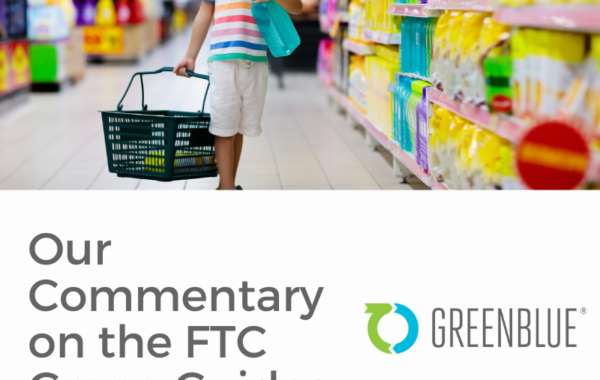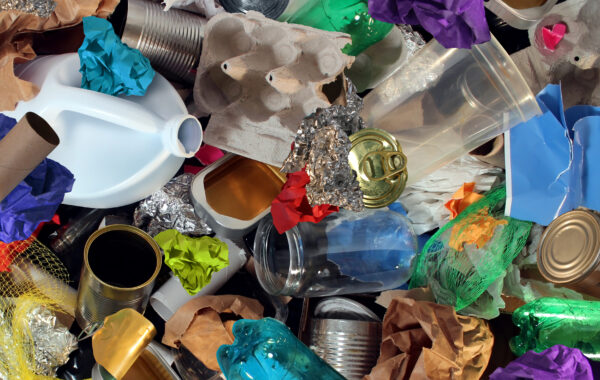June 4, 2020
When talking about circularity, sometimes product producers and others interpret this as recyclability. Or, they assume that circularity means the same thing as sustainability. In fact, sustainability is much broader than circularity, as circularity is about more than just recycling. Following one of the Sustainable Packaging Coalitions’ recent virtual sessions on this topic with Dan Healey, Global Marketing Director at Sealed Air, we decided to share some of our thoughts and key takeaways to better understand circularity.
Circularity is not just about recovery – it is about both sourcing and recovery. While there is much interest and focus today around claiming that a product/package is recyclable, there is less interest in figuring out how to incorporate that recycled material back in products. This link to recycled content is key in making a package truly circular. Without a market for recycled content, a package is not recyclable. This idea is key in the circular economy and completes the circle.

At the consumer level, there is a disconnect between what goes into the bin and what they buy. However, there is some data suggesting that consumers are starting to understand recyclability in packaging. There is a need to create awareness in the marketplace where brands tell their story on how they use recycled content. Leading brands and retailers are starting to dedicate real estate on their packaging and website to clearly identify and explain the next step for the packaging to their customers.
Currently, the market is not tipped in favor of circularity for plastics due to short-term reaction to low virgin plastic prices, among other factors. However, many brands have public commitments to use recycled content in order to grow these markets.
When performance of recycled content for plastics is a concern, this can hinder circularity. The quality of outputs can only be as good as the quality of inputs, which highlights the need also to design for recycling so that you provide good inputs to the system. Circularity also depends on the design of the application you are integrating recycled content into. Some applications need higher levels of performance than others. We should try wherever possible to adjust specifications to accommodate material on the market and also to design products in a way that they retain their value at the end-of-life, so producers can “take what they make” and buy their recycled materials back again to use in the same or other applications. It is also possible to get high performing and recyclable applications of recycled materials today. To do so however often requires strong commitment and willingness by brands to work closely with suppliers.
Smart policy is another enabler of circularity. Given what we’re seeing in the rest of the world, Europe in particular, the policy/taxes/regulations are already in place and industry needs to figure out ways to use more recycled content to meet these requirements. policy is another enabler of circularity. Given what we’re seeing in the rest of the world, Europe in particular, the policy/taxes/regulations are already in place and industry needs to figure out ways to use more recycled content to meet these requirements.
There are many loops in the circular economy. You can’t have a conversation about circularity without thinking about reuse systems. Reuse represents the smallest loop in the circular economy and is the recovery model that keeps the most energy embedded in the system. Growing interest in reuse systems are making some single-use consumption models potentially unnecessary. Applications that have circularity already are prime candidates for reusable packaging, such as e-commerce applications, with high return rates.
For recycling, there are small, medium, and large loops, and there is a challenge in how we view these loops. It does not need to be about turning a bottle into another bottle. The reality is that materials don’t have to go into a like-to-like system. We need more of an ecosystem type approach in how we think about circularity. Putting packaging into another recyclable package is great but also putting this material into durable goods that last a long time is also great and this should not necessarily be considered ‘downcycling’. The 3 Rs framework provides a nice way to think about small, medium, and large loops.
Circular economy purists would say that biological and technical cycles should be kept separate. In general, we consider recycling to be of higher value than composting for most packaging, because we have more recycling infrastructure available, and because recycling represents a more efficient use of energy, where you don’t need to break down a product all the way to the raw materials of nature and then make it all over again. Composting does make sense when the likelihood of the material being composted is greater than the likelihood of it being recycled, as with some food service applications, where the material is likely to be “soiled” by the food and most likely to be discarded with food scraps. In regions where organics are collected for composting, it would seem like a logical place for compostable packaging, assuming the material is truly compatible in that stream and does not act as a contaminant.
Waste-to-energy is not the best and highest use for material, but it also has a role to play in the circularity discussion. Some things may never get mechanically recycled. This is where emerging technologies like chemical recycling come in to play. But without those innovations in recycling technologies, waste-to-energy does offer a better alternative to landfills, as that energy is captured and reused, and it is certainly preferable to littering. At the same time, we should always be looking to innovate new technologies and strategies to move a package up the waste hierarchy.
Circularity should work together with broader sustainability. In the broader sustainability conversation, managing waste is very important as well as climate change and other environmental issues. It should not be a matter of choosing to care about one or the other, efforts should focus on addressing both. While there is still a large and sometimes narrow focus on recyclability in conversations on circularity, industry overall is getting better at understanding this more holistic view.
Sometimes however, recyclability comes at the expense of a larger carbon footprint or other sustainability trade offs, so being aware of unintentional consequences is key. Plastics in general perform better in energy efficiency, while paper performs better in recycling. Flexible packaging, for example, plays a role in addressing climate change due to its efficient use of materials, but struggles in recyclability. We need to figure out how to address the recovery challenge for flexible plastic packaging so that we can maintain the benefits of flexible packaging. We cannot allow perfect to be the enemy of good, and should strive to make the store drop-off stream as successful and quality as possible, while also looking at other better collection systems.
The focus of sustainable packaging innovations should be to minimize these tradeoffs and define where we can strike a balance between materials in a way that doesn’t prohibit recycling but still enables additional sustainability objectives.





